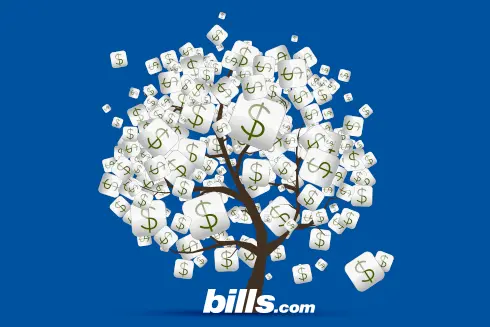
Get rid of your debt faster with debt relief
Choose your debt amount
Or speak to a debt consultant 844-731-0836
- A judgment debtor's wages may be garnished up to 25% of net income.
- Review your state's garnishment laws to learn your rights.
- Resolve your debts before a wage garnishment begins.
Can my paycheck be garnished by two different collection companies at the same time?
Can my paycheck be garnished by two different collection companies at the same time? If so can they both take the normal 25%? Thank you
The amount that your wages can be garnished for the collection of a judgment on an unsecured debt primarily depends on your state’s laws relating to wage garnishment. In most states, a judgment debtor’s wages can be garnished up to a maximum of 25% of his or her net income. In fact, 25% is the maximum garnishment allowed under federal law, so no state allows garnishment of more than 25% of a debtor’s net income. However, some states further limit the amount that can be garnished from their residents. I will explain more about garnishment in just a moment.
Quick tip
Concerned about what is appearing on your credit report now? Check your credit report today and get a free credit score instantly.
In states such as Texas, North Carolina, South Carolina, and Pennsylvania they do not generally allow wage garnishment for unsecured debts, while Florida does not allow garnishment if a debtor is considered the head of a household. Also, many state courts will reduce the amount of a garnishment if the debtor can demonstrate that the current garnishment amount is causing an undue hardship for the debtor and his family.
Before you assume that your wages will be garnished, I encourage you to review your state’s laws relating to garnishment for the payment of judgments for unsecured debts. To read more about your state’s laws relating to wage garnishment and what other assets are protected by state law, see the Bills.com State Consumer Protection Laws and Exemptions resource.
General Garnishment Rules
Garnishment limits outlined by federal and state laws define the maximum total amount that can be garnished from a debtor’s paycheck at any one time. For example, under federal law, the maximum that a consumer can be garnished for the collection of an unsecured debt judgment is 25% of his after-tax earnings. Generally speaking, if a consumer has more than one judgment creditor attempting to garnish his wages, the creditor who files for garnishment first is paid first; any garnishments received while a garnishment is already in place will sit unpaid until the first garnishment is paid.
Certain types of garnishments, such as those for delinquent taxes or child support, take priority over garnishments for regular judgments, so even if you are already being garnished by a creditor, if the IRS sends a garnishment notice to your employer, the first garnishment would stop the IRS would be paid before the garnishment for the judgment resumed. Also, you should know that the amount that can be garnished to pay these "priority debts" is generally higher than the amount that can be garnished for regular judgments. For example, a garnishment for delinquent child support may be able to take as much as 50% of your earnings, or possibly even more, depending on your state’s laws and the court order requiring the child support payments.
So, in a simple answer to your question, creditors cannot each garnish 25% of your wages; the creditors will either be forced to split the garnishment amount, or they will be required to wait in line to be paid in the order the garnishments were received by your employer. However, you must consider that having multiple garnishments sent to your employer may be grounds for termination of your employment. Under federal law, you cannot be fired for receiving one garnishment, but subsequent garnishments could be cause for your employer to terminate your employment, depending on your state’s laws and your employer’s policies relating to garnishments. If at all possible, I strongly encourage you to resolve these debts before a wage garnishment begins to prevent any potential problems with your employer.
Resolving a Garnishment
If you are struggling to repay unsecured debts, I encourage you to visit the Bills.com Debt Help page to read about various options available to help consumers resolve their outstanding debts. Filing for bankruptcy protection may be one option available to you to stop these wage garnishments; I invite you to visit the Bills.com Bankruptcy page to learn more about bankruptcy. I also encourage you to consult with a qualified attorney in your area to determine if bankruptcy is a viable solution to your financial problems.
I hope this information helps you Find. Learn & Save.
Best,
Bill
Debt statistics
If you are struggling with debt, you are not alone. According to the NY Federal Reserve total household debt as of Quarter Q4 2023 was $17.503 trillion. Student loan debt was $1.601 trillion and credit card debt was $1.129 trillion.
A significant percentage of people in the US are struggling with monthly payments and about 26% of households in the United States have debt in collections. According to data gathered by Urban.org from a sample of credit reports, the median debt in collections is $1,739. Credit card debt is prevalent and 3% have delinquent or derogatory card debt. The median debt in collections is $422.
The amount of debt and debt in collections vary by state. For example, in Massachusetts, 17% have any kind of debt in collections and the median debt in collections is $1580. Medical debt is common and 4% have that in collections. The median medical debt in collections is $408.
While many households can comfortably pay off their debt, it is clear that many people are struggling with debt. Make sure that you analyze your situation and find the best debt payoff solutions to match your situation.